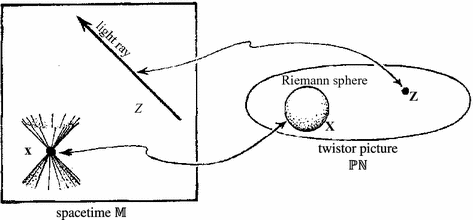Half of this year’s Nobel Prize in physics has been awarded to Yoichiro Nambu for his work on spontaneous symmetry breaking, the other half to Kobayashi and Maskawa for the CKM matrix as an explanation of CP breaking. A detailed explanation of the scientific context of the prizes is here.
The prize for Nambu is well-deserved and rewards one of the deepest, surprising, and most important ideas in particle theory, that of spontaneous symmetry breaking. In 1960 Nambu realized that non-invariance of the vacuum state under an axial symmetry could explain the existence of pions and determine many of their properties. He also realized that this phenomenon is closely related to what happens in various condensed matter models (including the BCS model of superconductivity), where the ground state is not invariant under a symmetry of the theory. Nambu has often been mentioned as a candidate for the award, and it’s surprising that it has taken nearly 50 years for it to come about. I’m a bit curious about how often Nobel Prizes in other fields are awarded for work done a half-century ago. Unfortunately the rather difficult times particle physics has found itself in the last few decades may mean that the best way for a particle theorist to get the prize is to have been around during the field’s heyday, and to remain in good health.
The Kobayashi-Maskawa award is a somewhat less obvious one, since it didn’t involve a surprising breakthrough, and it is about something completely different than Nambu’s work. In the early-mid 60s, starting with work by Nicola Cabibbo, it had been shown that (in modern language…) flavor mixing matrix for two generation models of the weak interactions is governed by a single angle, now known as the Cabibbo angle. In 1972, Kobayashi and Maskawa pointed out that for three generations the matrix is determined by three angles and a complex phase. The complex phase makes this a possible source of CP violation, and it seems to be the main if not only source of observed CP violation. The Nobel committee text makes the claim that:
This is in fact a result known in mathematics since around 1950, but the contacts between mathematics and physics were not great around 1970.
This is a rather odd description of the situation, since the mathematical facts involved here are quite simple ones about which 3×3 unitary matrices satisfy certain conditions, and presumably could have been derived by mathematicians who first worked with such matrices in the 19th century if this particular condition had come up. I can’t think of anything mathematicians learned around 1950 that is needed to solve the problem, and, once stated physicists could easily solve it without help from mathematicians (who perhaps would have been more likely to just have been a hindrance in this case…)
The quark mixing matrix embodies most of the unknown parameters of the Standard Model, and as such is a crucial object for experimental studies of particle physics. Because of this, the KM paper is the second most highly cited paper in particle physics (after Weinberg’s “A Model of Leptons”), but this ranking doesn’t reflect the depth or importance of the ideas.
Lots of other blogs are also covering this. Tommaso Dorigo points out that it’s a bit anomalous that a Nobel Prize for the CKM (Cabibbo-Kobayashi-Maskawa) matrix doesn’t include Cabibbo, who is still around. Lubos Motl thinks that what is important here is that Nambu is also a string theorist, and that one of the people on the committee making this choice was a string theorist, Lars Brink.
Update: Lots of coverage of this in the press. Michio Kaku has an editorial in Forbes, where, like Lubos, he sees the real significance as being that Nambu is a string theorist:
And there may even be a theory beyond the Standard Model, a true theory of everything that can unify all forces. It’s called string theory.
Not surprisingly, one of the founders of string theory is Professor Nambu, a newly minted Nobel Laureate who has years of research ahead of him. The best is yet to come.


